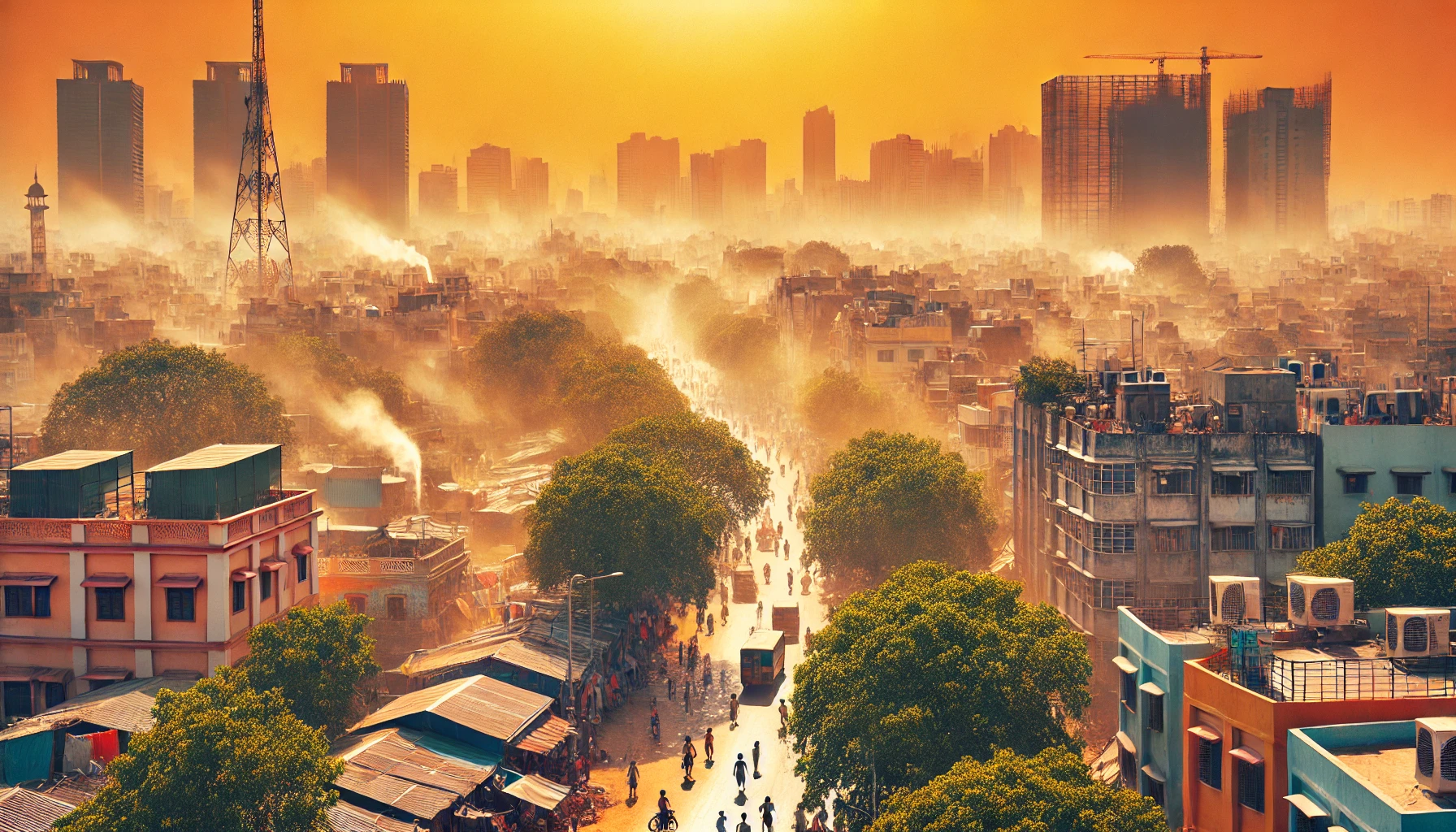Safeguarding Indian Cities from Heat: Cost-Effective Solutions for a Warming World
A World Bank study highlights urgent, cost-effective heat mitigation strategies for Indian cities, recommending urban greening, cool roofs, adjusted work hours, and heat-health early warning systems to reduce health and productivity losses from rising urban temperatures. Early warning systems, in particular, offer high impact at low cost.

The World Bank’s Urban, Disaster Risk Management, Resilience, and Land Global Practice recently released a working paper analyzing cost-effective strategies for mitigating urban heat in India’s cities, focusing on Chennai, Surat, and Lucknow. With contributions from Nicholas Jones, Asmita Tiwari, Natsuko Kikutake, Sacha Takacs, and Niels Souverijns, this study highlights the urgent need to address extreme heat and its effects on public health and economic productivity. As global temperatures rise, Indian cities increasingly experience extreme heat, especially due to the Urban Heat Island (UHI) effect, which intensifies heat levels in densely populated urban areas compared to rural surroundings. Urban heat is projected to increase significantly by 2050 under high-emission scenarios, bringing more frequent and intense heatwaves that could adversely impact millions. The study’s urban climate modeling shows that in high-density areas of Chennai, Surat, and Lucknow, night-time temperatures may remain up to 5°C higher than in rural zones, leading to prolonged and intense periods of heat stress. This intensification of heat waves is projected to raise heat-related deaths by one-third and lead to severe labor productivity losses, with up to 40% of working hours annually affected by unsafe heat levels. For cities like Chennai and Lucknow, where significant outdoor labor forces are present, the study estimates that 2-4% of each city’s GDP could be at risk by mid-century due to reduced productivity and health impacts from extreme heat. In this context, Indian cities need to adopt robust Heat Action Plans to safeguard public health and economic stability.
Expanding Urban Greening for Cooler Cities
The study compares multiple interventions aimed at cooling cities and reducing health and productivity losses due to heat. Urban greening, which includes increasing tree canopy cover by 10-30%, emerges as a key intervention with a favorable cost-benefit ratio. The analysis found that expanding tree cover significantly reduces local temperatures, which can lower excess mortality and enhance labor productivity. For instance, a high-ambition target of 30% increased tree canopy could prevent 800 to 2,700 heat-related deaths annually across the three cities, depending on the emission scenario. The benefits outweigh the costs for urban greening, with a benefit-cost ratio (BCR) ranging from 1:1 to as high as 5:1 under different scenarios. Besides cooling effects, trees offer additional benefits such as improved air quality, flood control, and mental health support, making them a valuable component of urban heat mitigation strategies. However, the study emphasizes that tree planting should be coupled with long-term maintenance to sustain these benefits over time.
Cool Roofs Offer Moderate Cost Savings
Another intervention analyzed is the implementation of cool roofs. These treatments involve reflective coatings that reduce indoor temperatures by reflecting heat rather than absorbing it, which could lower air conditioning costs and improve thermal comfort for occupants. Cool roofs, especially when using lime wash, have been shown to yield favorable energy savings and a BCR of around 3:1, particularly in cities like Chennai, where high-intensity heat stress is frequent. However, when combined with additional structural reinforcements, the cost-effectiveness drops, and the BCR can fall below 1:1. Thus, the study suggests that while cool roofs are beneficial, they may be most effective as part of a broader urban heat mitigation plan.
Adjusting Work Hours to Beat the Heat
In terms of labor productivity, one practical adaptation is shifting work hours for outdoor laborers to cooler parts of the day, such as early mornings and late afternoons. In theory, this adaptation could prevent a substantial amount of productivity loss by avoiding peak daytime heat. If implemented, a high-ambition target could prevent up to 10% of lost working hours due to extreme heat, translating to 0.15% of the economic output of a city like Lucknow by 2050 under high-emission scenarios. Despite its high theoretical BCR of over 50:1, this adaptation presents logistical challenges, especially for workers who face long commutes. Still, it remains a promising option for cities that can accommodate such schedule shifts.
Heat-Health Early Warning Systems: A Priority Intervention
The study’s most impactful recommendation is implementing heat-health early warning systems, which provide advance alerts to help people protect themselves during extreme heat events. These systems offer an impressive BCR of over 50:1 and are highly cost-effective, especially in densely populated cities like Chennai, where they could prevent between 1,400 and 3,500 deaths annually by 2050. The study cites successful early warning models, such as the one used in Ahmedabad, which effectively reduced mortality rates during heatwaves. Heat-health early warning systems stand out for their potential to deliver significant public health benefits at a relatively low cost, making them a “low-hanging fruit” for cities aiming to mitigate heatwave impacts quickly.
While the study highlights the effectiveness of these interventions, it also recognizes limitations. Health impacts focused on mortality without accounting for non-fatal illnesses that can also result from heat stress. Similarly, the labor productivity analysis primarily examined outdoor labor, which may not fully capture productivity impacts for indoor workers or those in less physically demanding roles. Despite these constraints, the study’s findings offer clear evidence supporting the urgent need for heat mitigation actions in Indian cities. The authors recommend prioritizing heat-health early warning systems for immediate impact, coupled with urban greening and selective adoption of cool roofs for long-term resilience. As the study concludes, cities are uniquely positioned to address extreme heat impacts through coordinated policy interventions and targeted investments, ultimately helping to build urban resilience in a warming climate.
- READ MORE ON:
- urban heat
- public health
- Urban Heat Island
- cool roofs
- heatwaves
- FIRST PUBLISHED IN:
- Devdiscourse










